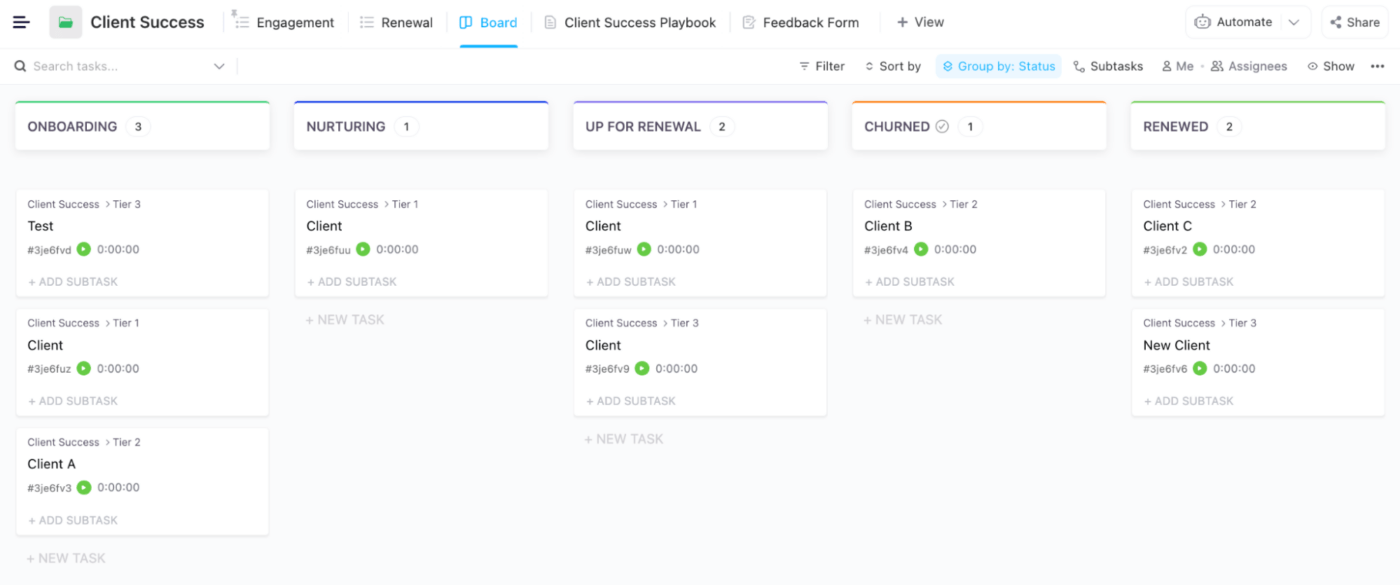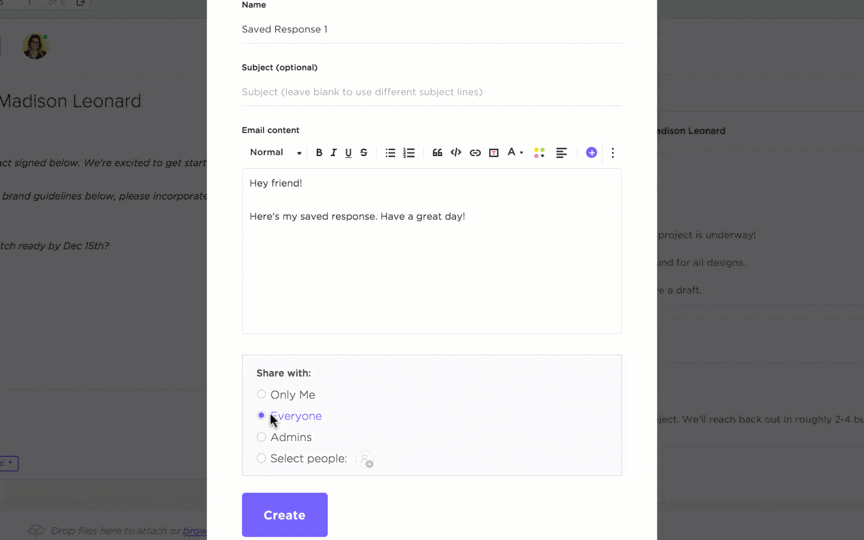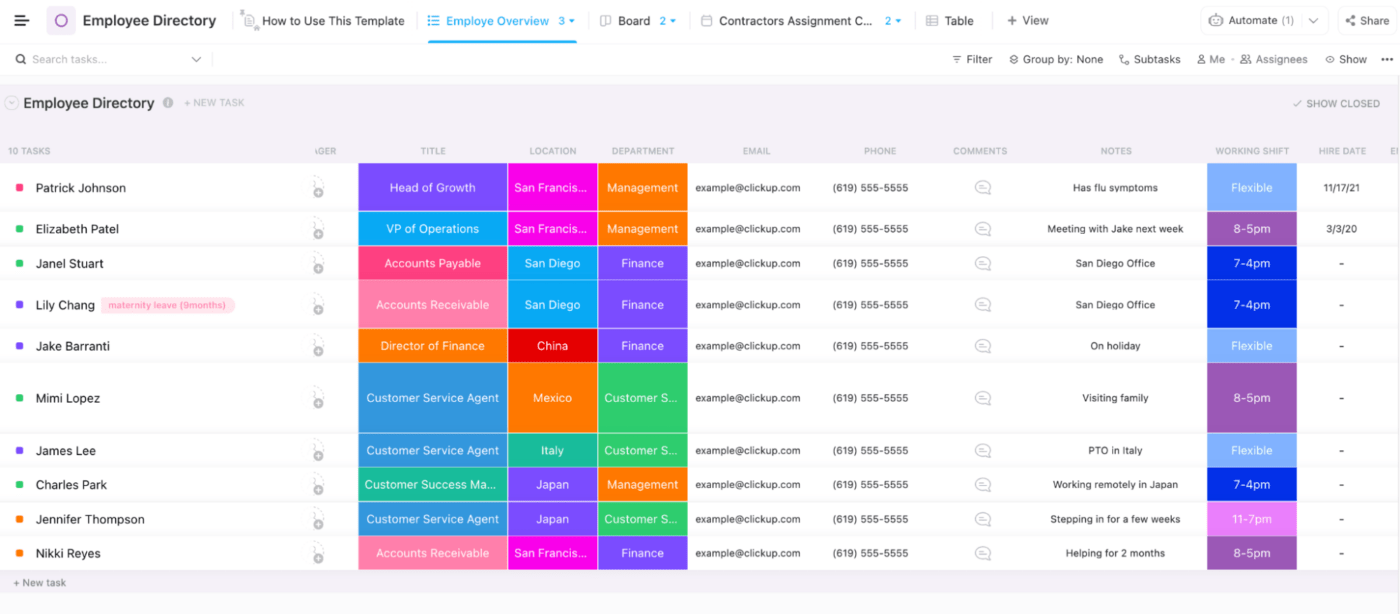Top 8 CRM Alternatives to Improve Your Business 2025

Sorry, there were no results found for “”
Sorry, there were no results found for “”
Sorry, there were no results found for “”
There’s a frequent visitor on your to-do list: Find a better way to manage clients.
After all the free and paid trials you’ve gone through for the umpteenth time, you haven’t found a CRM (customer relationship management) software that sticks. Many dedicated CRM software like Zoho CRM are great tools, but they’re high maintenance and expensive. 💸
Have you considered a CRM alternative? It’s a purpose-built platform to manage contacts while organizing administrative projects so you have the bandwidth to nurture client relationships.
CRM alternatives make contact management frictionless so you don’t have to keep modifying your business processes to accommodate a piece of tech. Instead, you’re able to freely customize based on the way you work—without the added costs.
We’ve put together an on-tap source of the best (and some familiar) CRM alternatives to help you prioritize sales activities and revenue goals. We also included ClickUp templates for you to get a competitive advantage and get started today! ⚡️
Sales managers: If you’re looking for the best approach to simplify oversight in CRM workflows and contact databases, a Kanban board is the best agile CRM alternative. A Kanban board is a no-code workflow visualization tool for consolidating information.
Unlike a spreadsheet with large amounts of data, a Kanban board narrows the focus to view only the most important information at a glance. There are many internal and external Kanban board use cases for sales teams, including:

Bonus: CRM Use Cases
For organizations using Google Workspace or Microsoft Outlook, managing contacts typically happen in inboxes. The Google Workspace Marketplace alone has a trove of integrations to optimize Gmail inboxes.
Combined with Gmail features like labels, categories, and filters, salespeople are able to semi-customize their inboxes.
However, there is a dark side to email in business communication: Notifications overload. Response stress. Longer hours. These are productivity blockers, especially for remote-first sales organizations.

All to say, if you do decide to use email as a CRM alternative, make sure you make it work for you and not the other way around! Adopt best practices for email response times, automation, reminders, and templates so you’re not drowning in busy work.
So for our productivity enthusiasts who cannot stand to open and close 40+ email threads, we have a solution for you: Email in ClickUp! Create email signatures, manage email accounts, and link emails to related work items—without opening new tabs. 🤩

Somewhere in a salesperson’s inbox, there’s a worn-out “v12_Final_FINAL” proposal file—so this one’s for you!
If you have repeatable proposals, contracts, or guides, get them into an online shared document editor. Create as many versions as needed for specific salespeople or client types.
The important thing is, you’ll have all your data in one place. For example, in ClickUp Docs, you’re able to build Doc templates with branding and preset formatting so all documents look uniform.
Here’s everything you need to know to create, customize, and connect your Docs to your tasks and plan effectively! ⬇️
If you want to engage with your contact database in new ways, you’ll enjoy digital whiteboards!
On an infinite canvas, salespeople get a visual snapshot of where a prospect or client stands without the limitations of a traditional dry-erase board.
The evolution of workplace collaboration tools has made it possible for digital whiteboards to be user-friendly and mobile. So everyone on your team is able to access the most up-to-date information at any time!
The key to maximizing the value of digital whiteboards for contact management is effective navigation. When your objects, images, ideas, and tasks are strategically placed, it unlocks a productive flow state so you’re able to continually build as you grow. 🌱

If you’re new to ClickUp Whiteboards or if a blank canvas feels intimidating, try the free Customer Journey Map template by ClickUp!
Bonus: SaaS CRM software!
Similar to a directory, lists are “living” databases to manage contacts and track interactions. Account managers use lists to centralize information from different types of sources, so it becomes their single source of truth.
You’re most likely using lists right now, but if you want an upgrade (at no cost) try Lists in ClickUp! Download the free Client Success Tracking template by ClickUp with mock tasks and information to explore how you can manage Lists your way.

When you’re organizing the same information type from one client to another, it’s useful to have a simple, well-organized table. Unlike digital whiteboards, spreadsheets have a structure to serve smooth data entry. Along with grouping, filtering, and sorting options; a contact spreadsheet becomes the go-to work tool.
Compared to other CRM alternatives on this list, will this tool still work for you as you scale? The short answer: Not by itself.
Spreadsheets from legacy apps aren’t designed to house conversations, files, or personal notes; things you regularly need for sales productivity. But don’t let this discourage you! If you’re more comfortable in spreadsheets, you’ll enjoy the Table view in ClickUp because it’s a superpowered spreadsheet built for organizing any type of work.
Bonus: CRM software for Mac!
Here’s an inside look at how to create your perfect database in ClickUp! ⬇️
We covered why standalone spreadsheets aren’t designed for communication and collaboration, so the antidote is a directory. A directory is similar to a spreadsheet with columns and rows, but its performance with the right project management software defeats a simple spreadsheet.
Directories are useful in many ways: Salespeople are better equipped to store large amounts of contact data, managers have clear visibility into work progress, or teams build internal strategic partnerships to close deals faster. Because directories are made to work for any use case, here are a few to start with:
And the list goes on!
If you want to test a powerful directory, download the free Employee Directory template by ClickUp! This template includes mock information to spark inspiration for your custom directory.

Perhaps the most exciting CRM alternative on this list is using a map for managing contacts! Plotting contacts by their addresses takes organization to a new level if you have location-based work. And in ClickUp, you don’t sacrifice project data because addresses added to the Location Custom Field are linked to the contact task.
Check out ClickUp’s Map View!
Not ready for a CRM alternatives? Learn how to build a CRM in ClickUp.
If you’ve ever been curious about ClickUp, here’s how you can get started for free:
With ClickUp, you’ll pile up wins to start and end your day with unshakable confidence in your contact management system! 🏆
© 2026 ClickUp